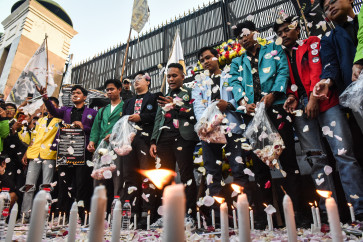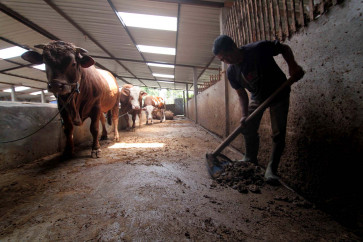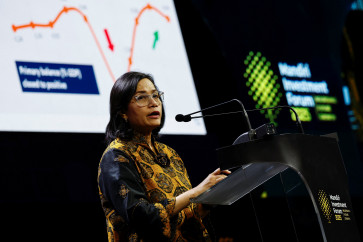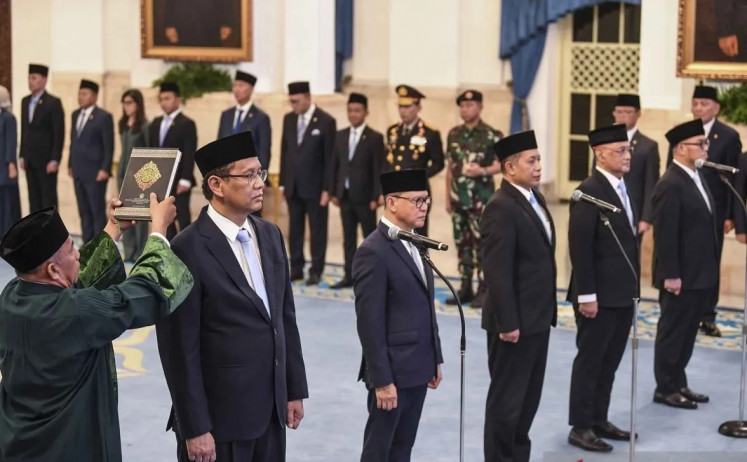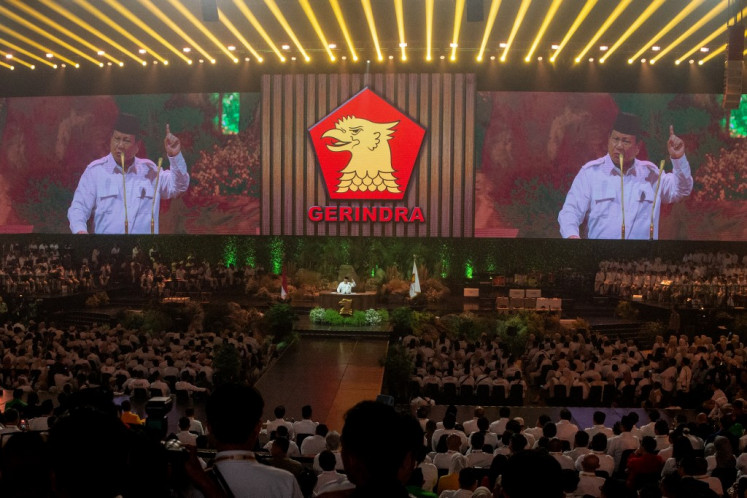Popular Reads
Top Results
Can't find what you're looking for?
View all search resultsPopular Reads
Top Results
Can't find what you're looking for?
View all search resultsLake Toba: Land of the Bataks
Lake TobaLake Toba’s anesthetic vibe has lured many backpackers to North Sumatra over the years
Change text size
Gift Premium Articles
to Anyone
Lake Toba
Lake Toba’s anesthetic vibe has lured many backpackers to North Sumatra over the years.
Formerly a super-volcano until about 75,000 years ago, a massive eruption left a gaping hole in the Sumatran landscape. At 505 meters deep, 100 kilometers long, 30 kilometers wide Lake Toba is the largest volcanic lake in the world.
The local Bataks hold firm to their history and culture. In a land of 95 percent Islam, the Bataks, which practice a blend of Christianity and Animism, have a reputation for being blunt and gruff. However, I did not see any of this while I was there. After being a life time New Yorker I am impervious to bluntness and gruffness.
Before being colonized, the Bataks had a highly developed system of government with a strong judiciary branch and were cannibals.
They are also historically renowned warriors who fought neighboring villages as well as the influences of Islam. German missionary Nommensen swayed the Bataks in the 1880’s by adapting his Lutheranism to local Animism.
From Jakarta, it only takes a two hour plane ride to get to North Sumatra’s capital Medan. Next take a four-hour shuttle bus or chartered taxi uphill to Parapat and finally board a 45-minute ferry to Tuk Tuk or Samosir Island. Parapat is the gateway to Tuk Tuk and Samosir.
Samosir is almost as big a Singapore and is technically not an island since it is attached to a peninsula.
Batak weavingMy friend flew in from New York and we were ready for our Sumatran adventure. We arrived at night after a longer than normal planned trip thanks to a scheming shuttle operator. We had to wait for an alternative mode of transportation, by way of taxi. As a result, we missed the last ferry at 7 p.m.
Our guide, Mathias, was waiting at Parapat from 3 p.m. for us to arrive. We boarded a ferry to Samosir then took motorbikes to Tuk Tuk.
Our luggage precariously balanced between the motorbike driver and our bodies. Twenty minutes later, we were at the homestay; the Reggae Hut. We slept in a traditional Batak house. I tried unsuccessfully to make out the landscape through the thick blanket of darkness.
Next morning, I wasn’t disappointed. The lake’s rich navy blue color was ringed with lush green and almost blue mountain range. Lake Toba was abuzz with activity. Ferries, speedboats and wave runners all expertly crisscrossed each other.
After a quick breakfast of fried lake fish fillets and banana juice, we headed out for a morning walk. I soon saw the stereotype of a Batak man, never far from his guitar, hold some truth. At almost every quaint shop, guitar strings would ring out accompanied by a singing melody.
The air was crisp and the sun was absent, which contributed more to the town’s sleepy, idyllic and otherworldly vibe.
A traditional Batak houseShouts of “Horas!” (God protect you!) by shopkeepers punctuated the stillness. On a motorbike, I discovered that Lake Toba’s landscape was fairly flat. Pine trees silhouetted in the landscape looked “photoshopped” to my eyes.
Since I was in the heart of Batak culture, I needed to see how these reformed cannibals lived. The town of Ambarita, meaning “well known village”, was the best place to see this.
The town is home to the impeccably preserved three hundred stone chairs, where the king, elders and high priests would hold war councils and trials in the “stone court of kings.” Nearby is the execution block were right up to 1900’s offenders were beheaded.
Trials similar to a modern day judicial court were held here. The accused was held in jail, continuously fed to fatten him up and sent to trial. There was a prosecutor, defense, eye witness, judge and jury. The offences that warranted trial were pre-marital sex, adultery, theft and espionage (spying for other villages).
Sentencing ranged from the hands of a convicted thief being chopped off to death for an adulterous male. The criminal would then be eaten by the entire village. The eating of human flesh was a highly formalized and ritualistic process. While the person was still alive incisions were made into his flesh and a mixture of salt, chili peppers, lime and garlic were rubbed inside the cuts before he was beheaded and roasted.
A Batak house is a symbolic work of art. It can take as long as a year to carve one out and can inhabit as many as four families. To enter a Batak house one must duck through a small door. Water buffalo horns hang on the gables. The curved roof pays homage to the canoe, the Bataks primary mode of transportation from Borneo.
Holy colors of red, white and black are featured in fantastic mosaics featuring geckos and serpents for good luck, magical birds and female breasts to symbolize fertility. Despite the drop dead gorgeous scenery outside, these houses have no windows and are in cave-like darkness.
The view hardly changes in this small region. The lake is entrenched in everyday life. The Batak’s rich and violent history seems to contradict the serenity of Lake Toba. But then again it seems befitting that world’s deadliest super-volcano is home to one of the deadliest tribes of Indonesia.
— Photos by Diana O’Gilvie




